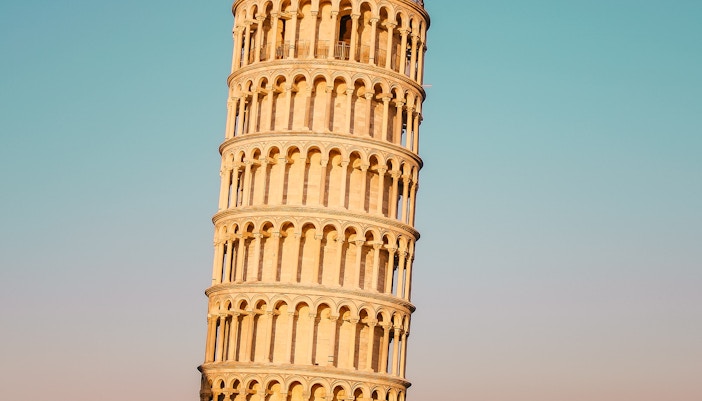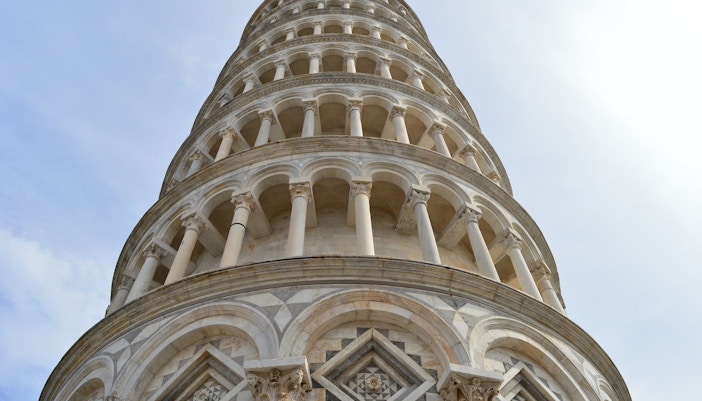Meters: 58.36 meters
Arms: 100 braccia pisane or Pisan arms
Feet: 191.47 feet or 191 feet and 6 inches;
Yards: 63.8 yards
High side of the tower from the ground: 56.67 m or 185.92 ft
Low side of the tower from the ground: 55.86 m or 183.26 ft
Height of every floor (2nd to 8th): 10 arms or 5.84 m

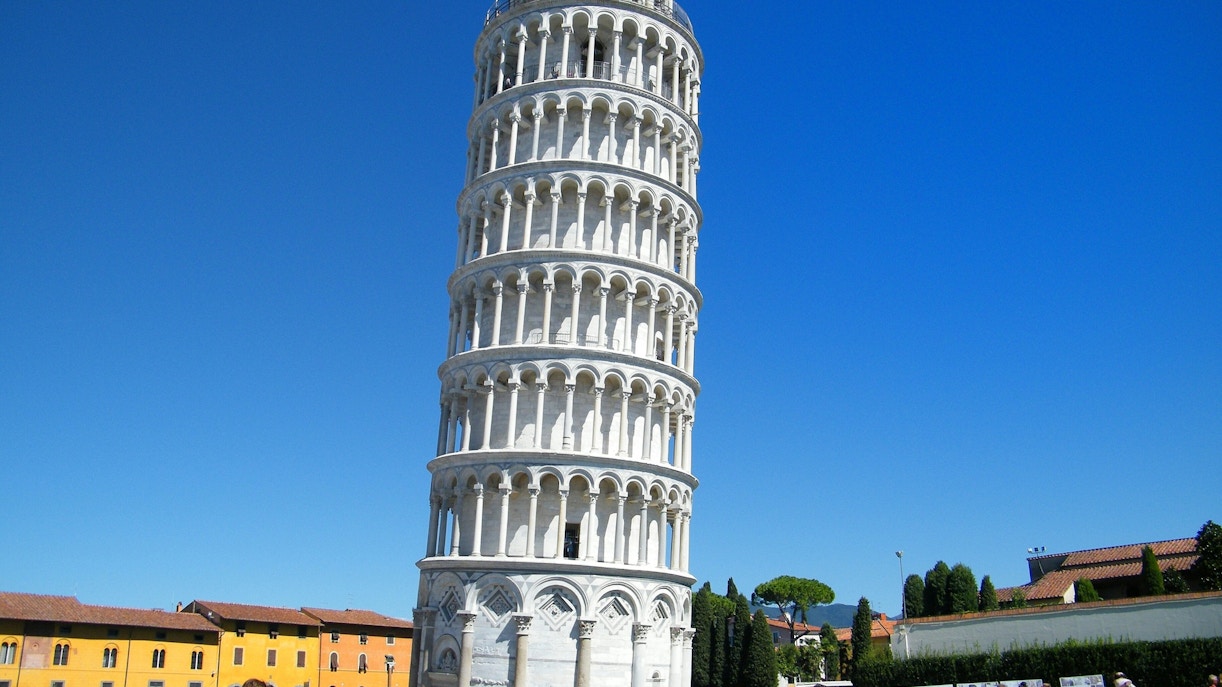
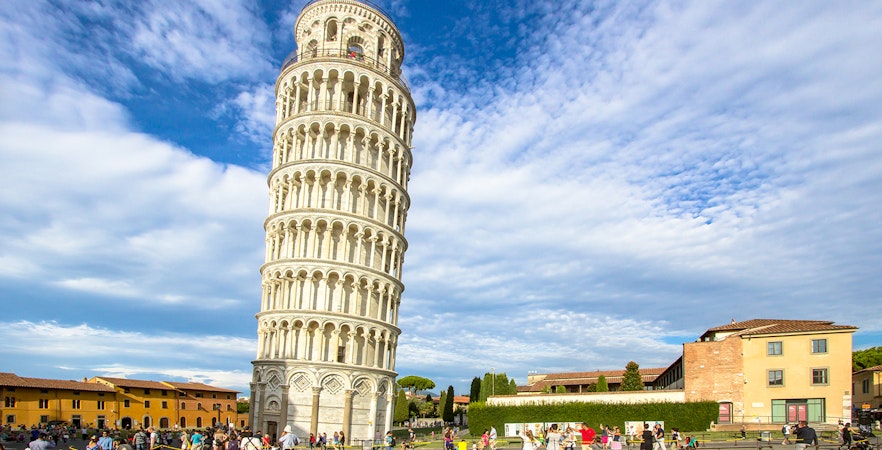
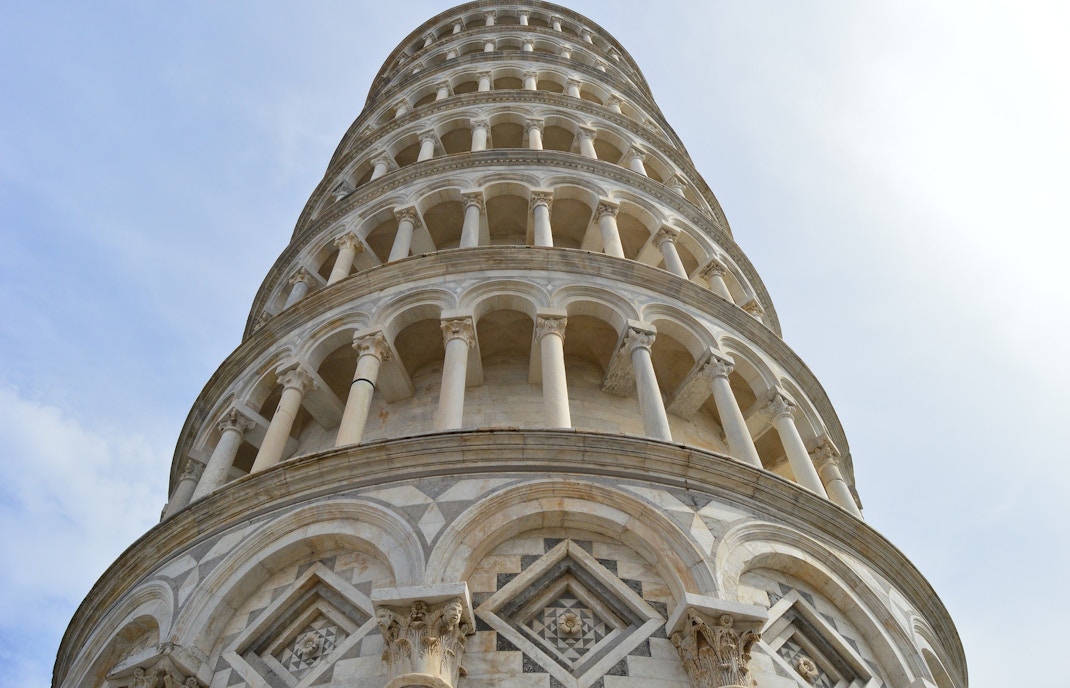

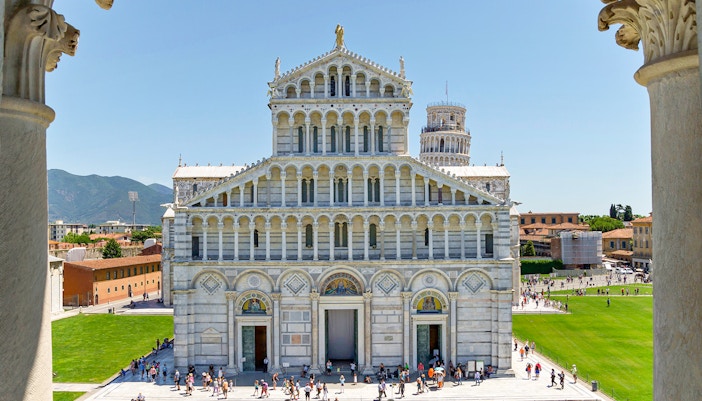
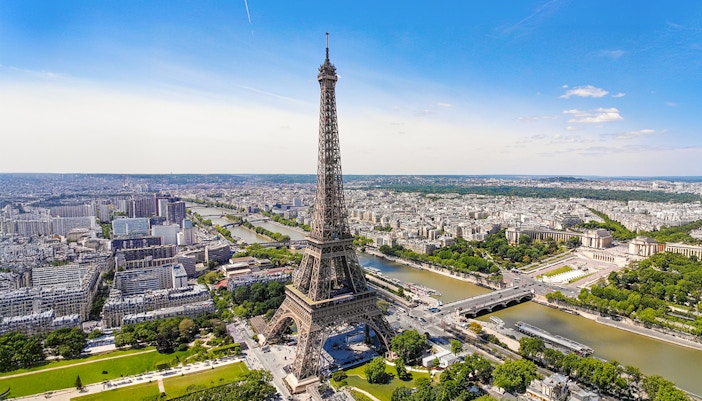

.jpg?auto=format&w=702.4499999999999&h=401.4&q=90&ar=7%3A4&crop=faces&fit=crop)
